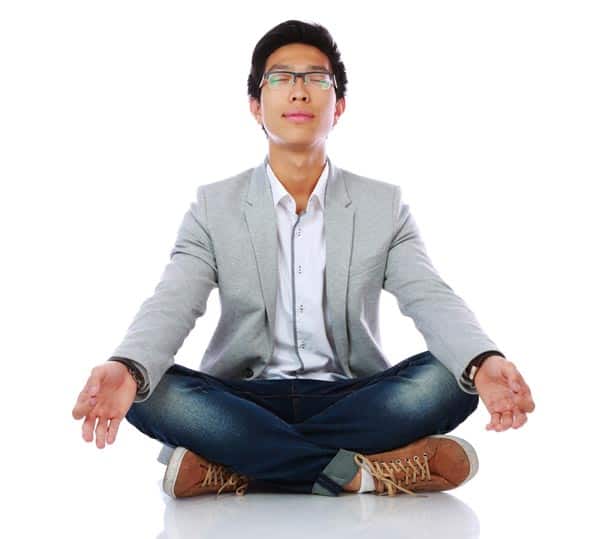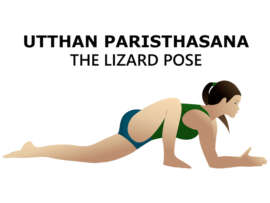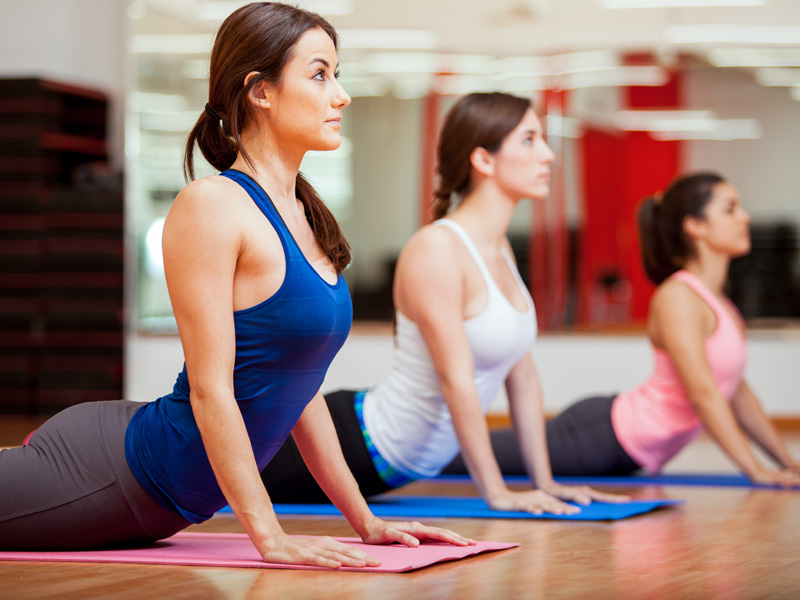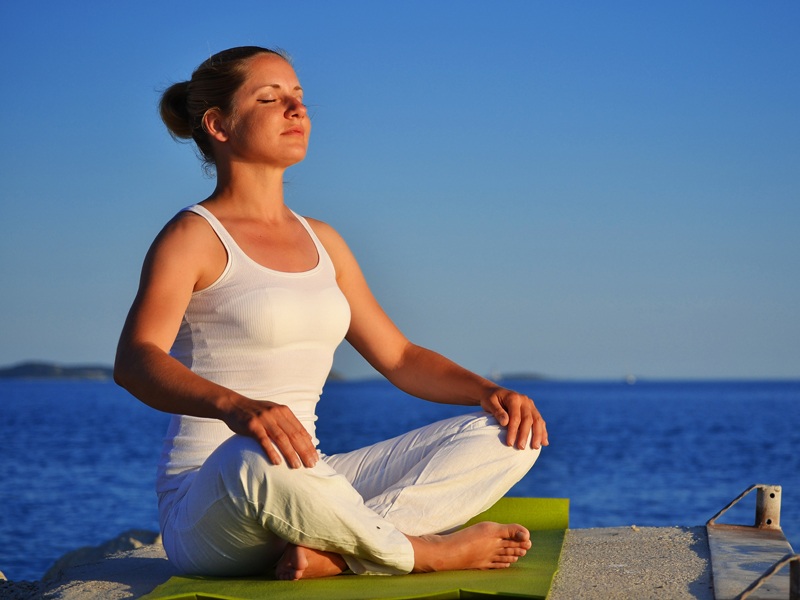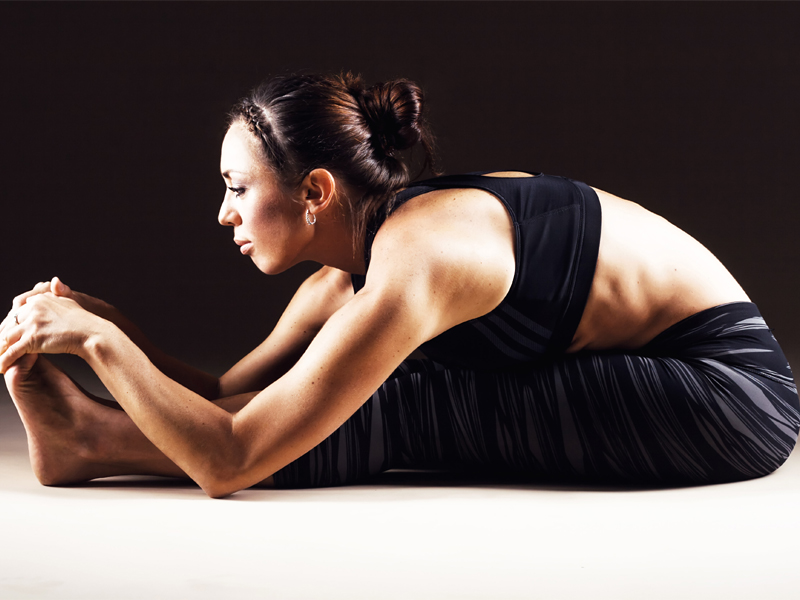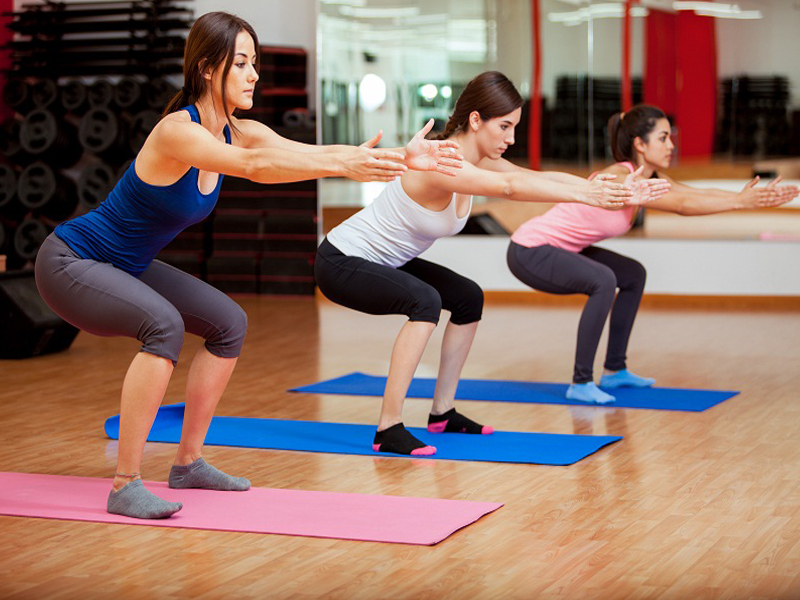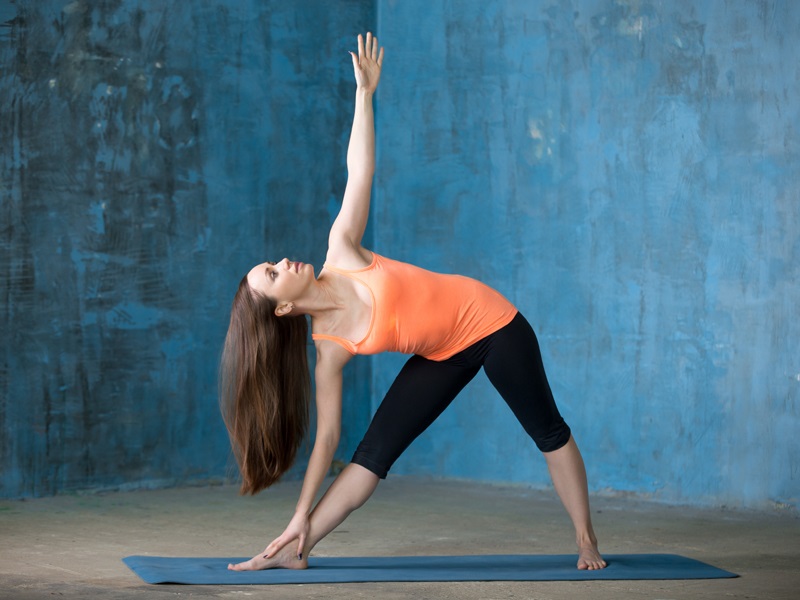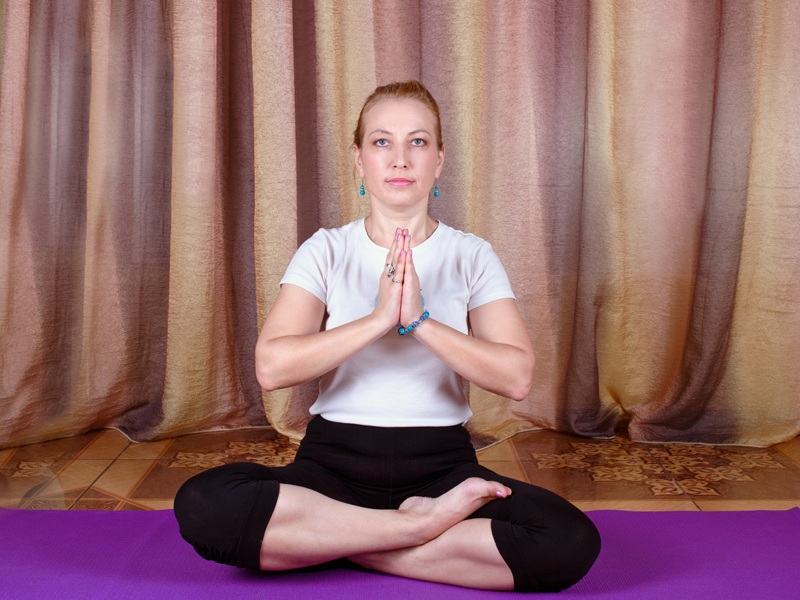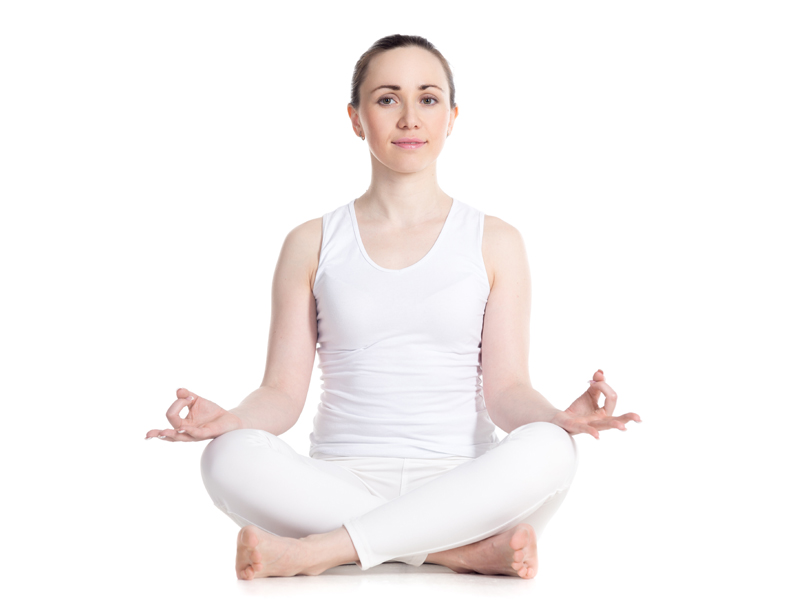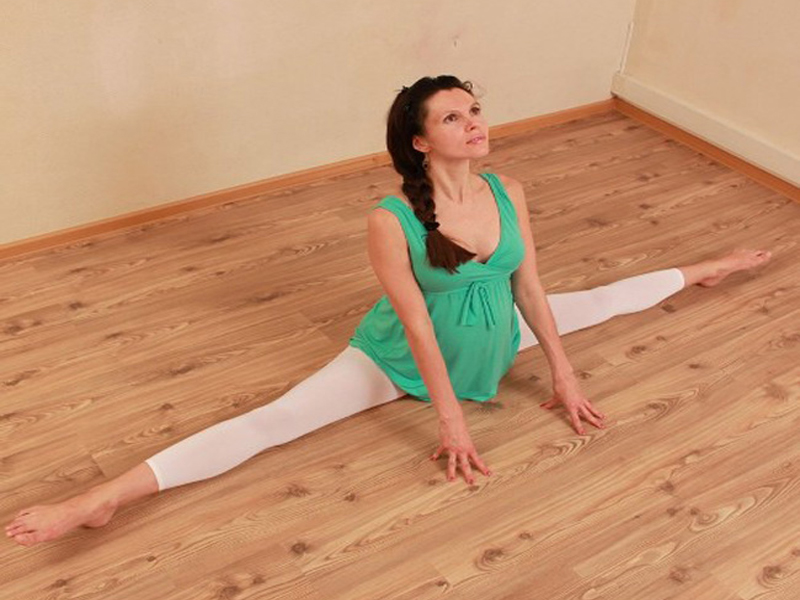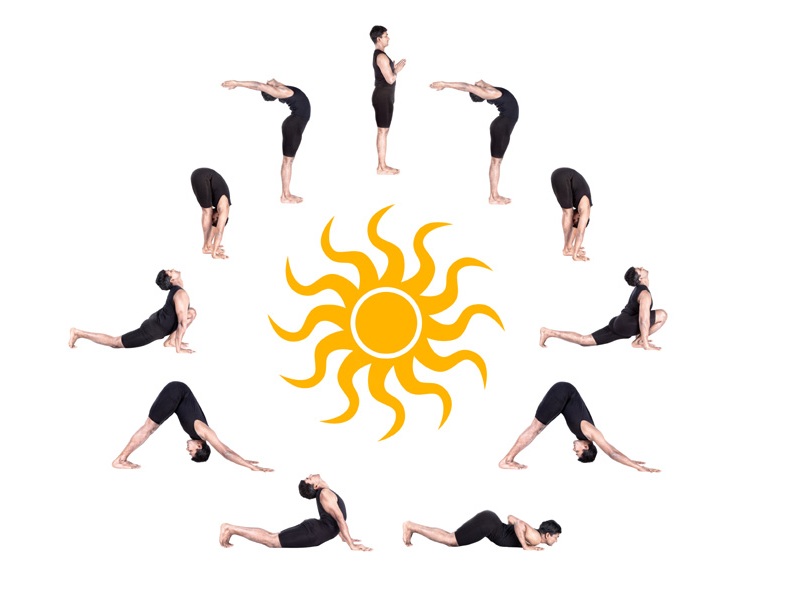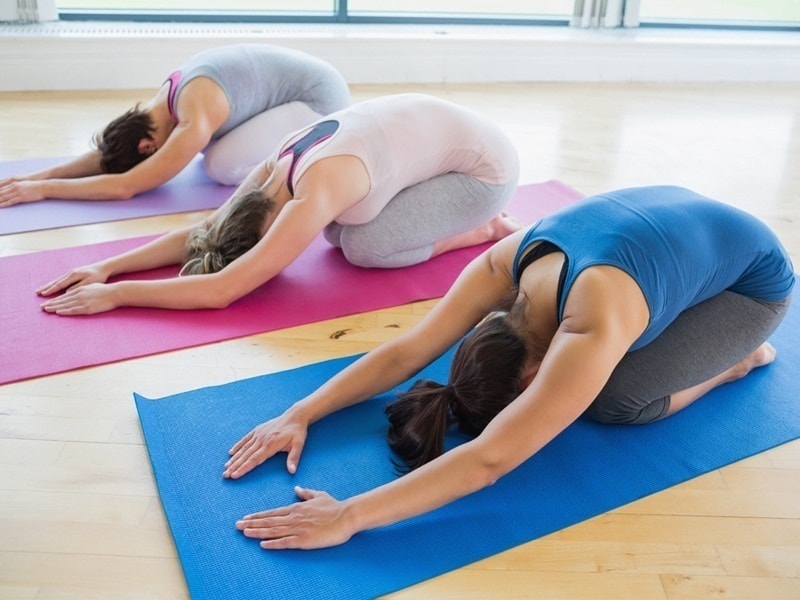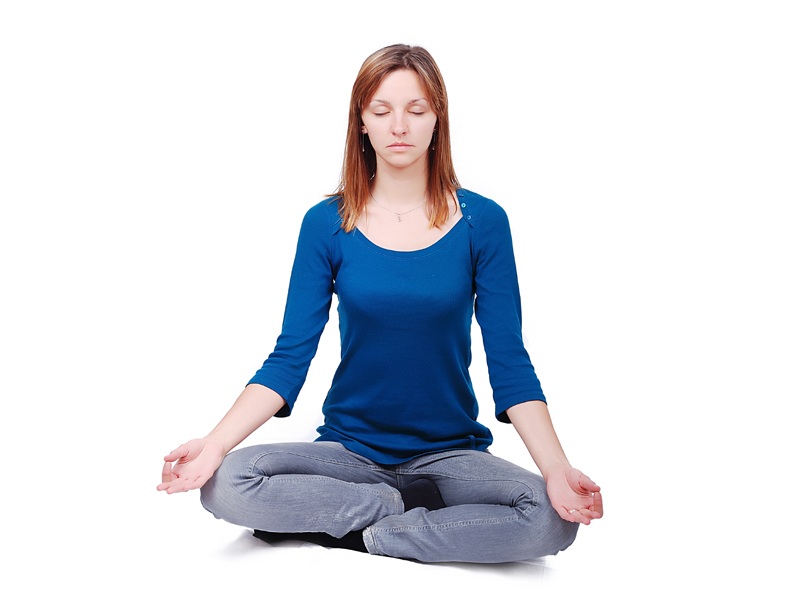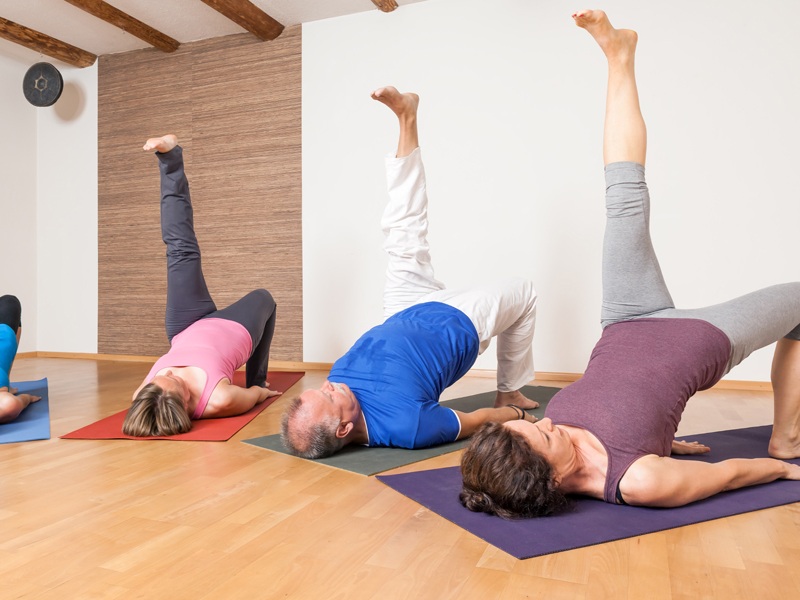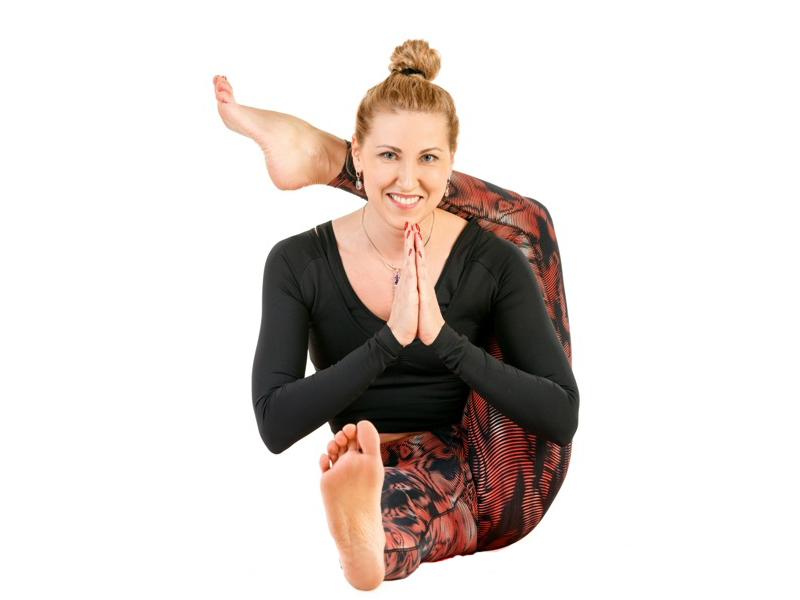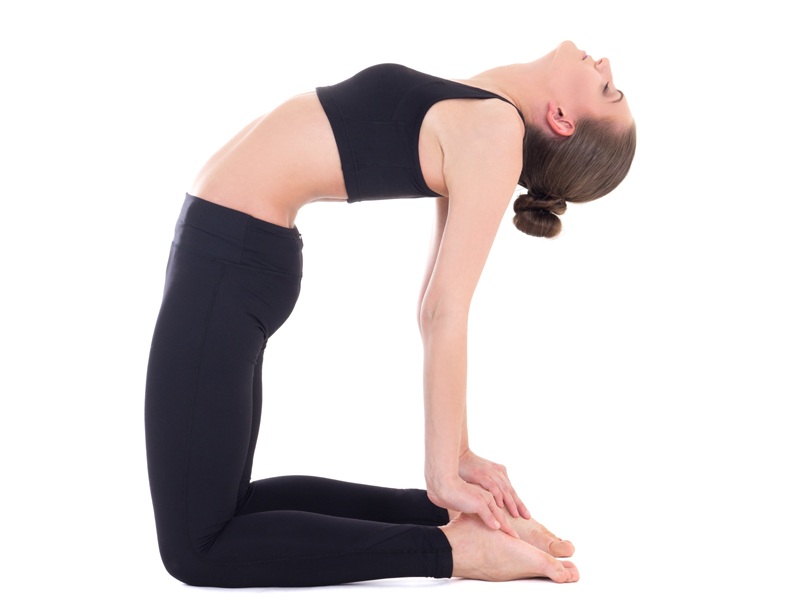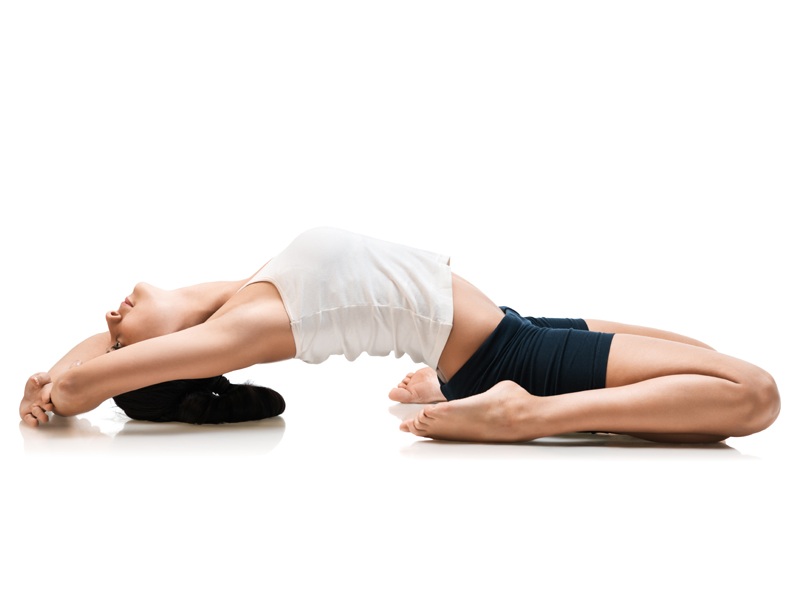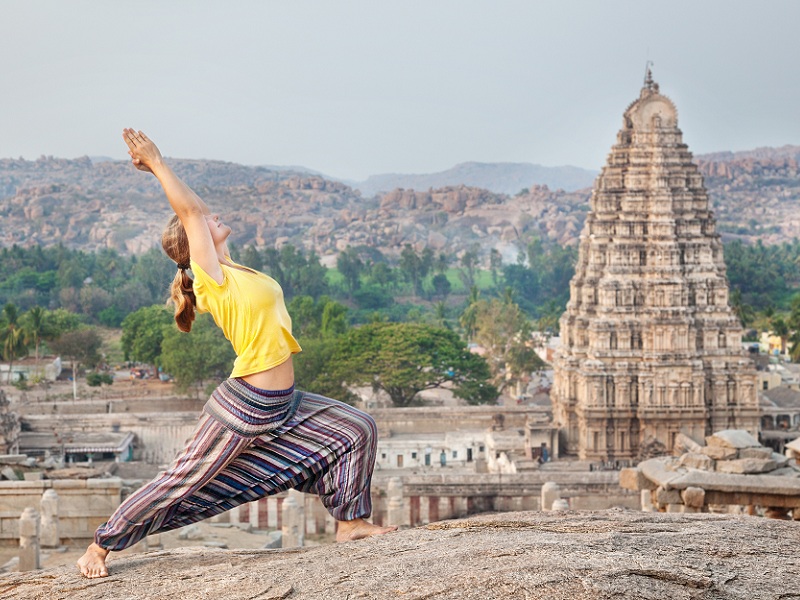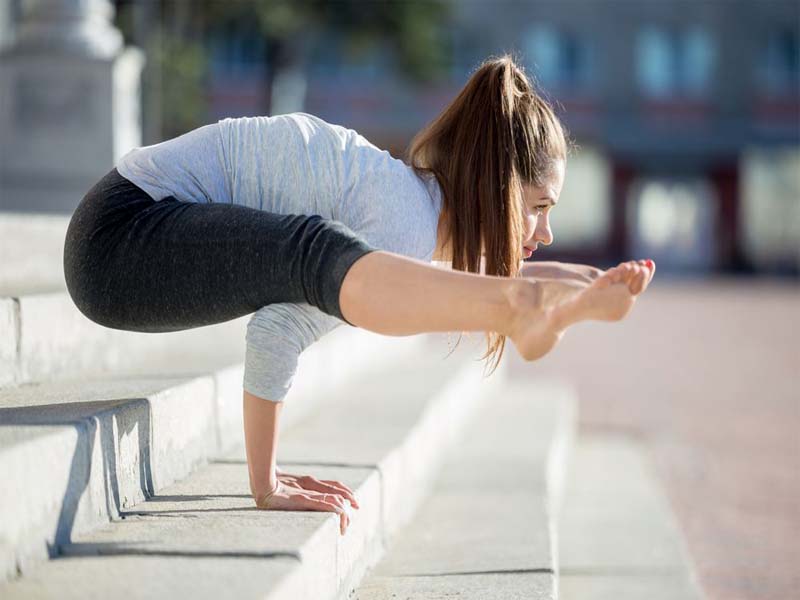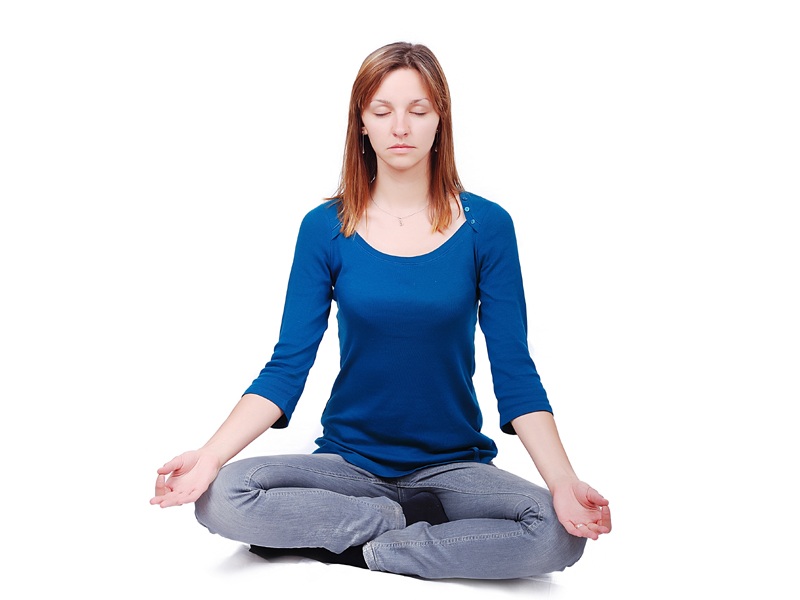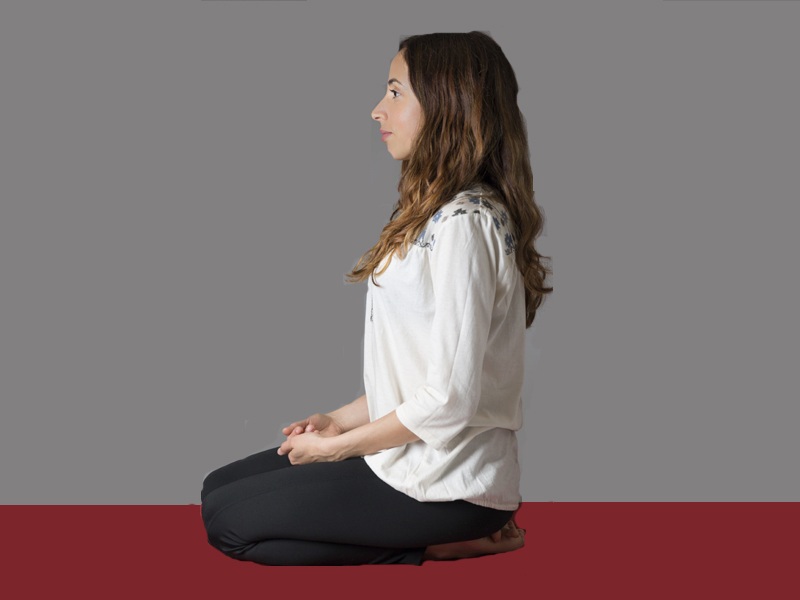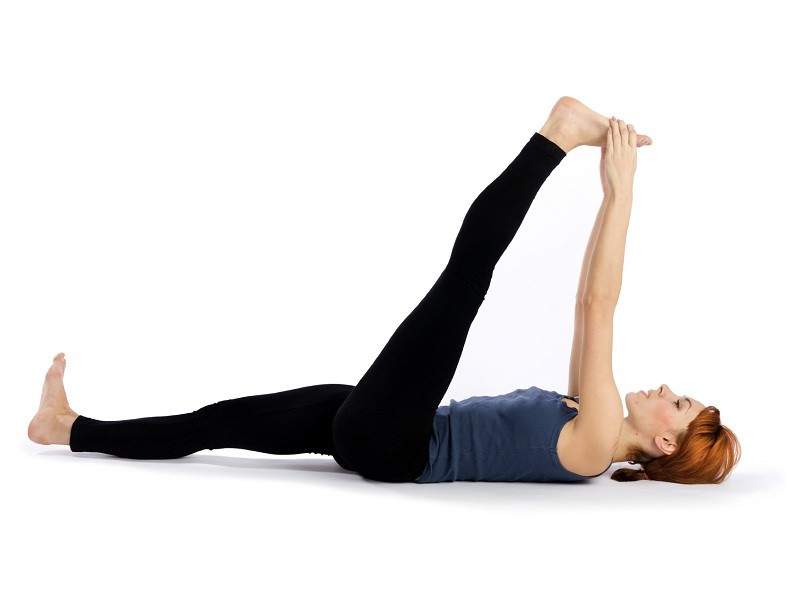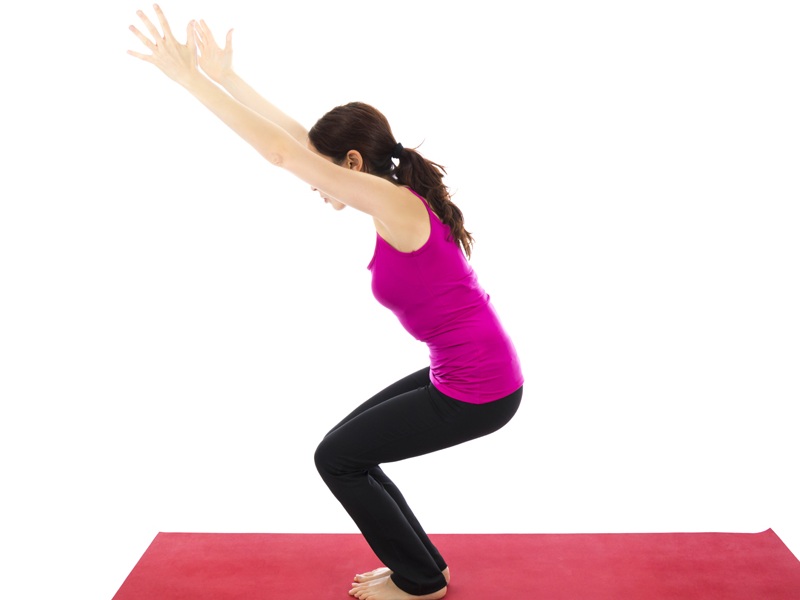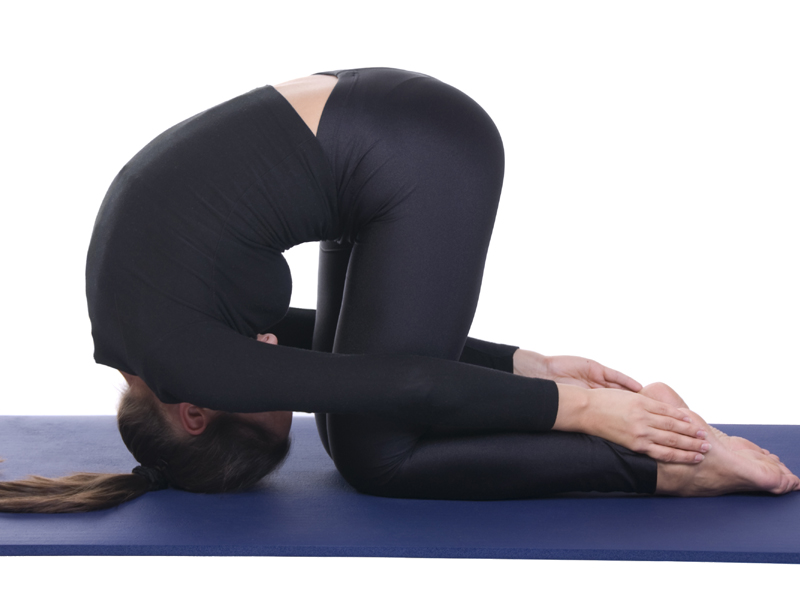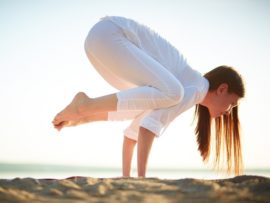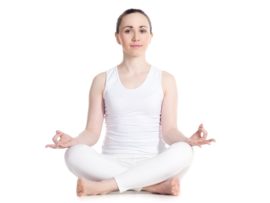Pranayama deals with the subtle life force. Prana essentially means the energy that is needed to sustain our physical body and in the absence of which our body would perish. It is this prana that nourishes the mind and keeps our body alive. This prana creates the aura around our body and flows through thousands of nadis in our body and also the various chakras of the body. The quality and the quantity of the prana that flows into our body determines the state of our body. With pranayama, both the quality as well as the quantity of the prana improves and thus one’s physical health, as well as a mental state, is improved, and one becomes very calm and peaceful. Hence, it is essential that one practices pranayama Yoga.
What is Pranayama Yoga?
Pranayama name has a Sanskrit origin and is a combination of 2 words Prana, which means breath and Ayama, which means the suspension of breathing. According to the technical definition by Bhattacharyya, pranayama yoga is a 3-step model which contains Purak – which means breathe in, Kumbhak, which means to retain the breath and Rechak, which means discharging the breath. There is a mention of Pranayama in Bhagavad Gita also which means ‘trance induced by stopping all breathing.’ The traditional Hatha Yoga makes use of various pranayama techniques and thus is a very vital step for the spiritual development of a person.
What Should You Know Before You Do Pranayama?
Before you know how to do pranayama yoga, first notice what you should know about this yoga asanas. Understanding of the prana is essential before you do Pranayama. It is prana that creates the aura or the energy body of a person and adds the life force to the person. Hence by practising Pranayama the quality, as well as the quantity of this prana, is improved to a great extent. However, one cannot see the changes overnight, nor can these types of breathing be mastered in a single day. Practice, they say, makes a man perfect, and thus, you need to practice these breathing techniques to master them as well to be able to reap the maximum benefits out of the same.
Many people believe that performing yoga is much more beneficial then to spend hours hitting machines. Yoga not only keeps us healthy, it calms our mind, also cures many diseases that too without any application of medicines. Yoga also teaches us how to gain self-control. It builds our concentration power much stronger. Many yoga experts say that there are a few basic asanas which provide immense development benefits to the children as well as for adults. Yoga is also used to reduce facial wrinkles and enhances our beauty.
Among all the yoga exercises, the simplest form of yoga is pranayama. Pranayam (also spelled as Pranayama) may be defined as a process and technique which purifies our whole nervous system including the brain. It brings stability to stabilize our mind. These qualities, everyone desires to have, but very few do actually possess. Pranayam is done before starting any asanas. It can be said as a warm-up exercise before starting the asanas. It removes laziness and drowsiness of the body and gives a peaceful experience to our body. Further, yoga and Pranayam energises our mind with new vigour and peace.
The term Pranayam has been constituted by two words: Prana (energy) + Ayama (flow). Prana is the principle of development and sustenance both of the nervous and cellular tissues of the body and the mind. Pranayam is a similar process of natural breathing. It hardly offers any scope of artificiality. In this yoga exercise, we breathe, allowing the air to enter through the nose and depending on one’s general health and strength of the lungs; it is retained inside and then is exhaled. This natural intake and outflow of the breath go on continuously.
The difference between this natural process and the ‘Pranayam’ is that in the former, the inhalation and exhalation are not necessarily connected with the mind. Whereas in pranayama, the air continues owing to the natural functioning of the heart and lungs. The inhalation and the exhalation are not done with any set duration of time. In some people, the inhalation process takes a longer time than the exhalation, and even the opposite may occur in some other people.
Practising these breathing exercises regularly helps in the removal of the waste materials which are normally carried out by our digestive system, urinary system and of course through the skin. Pranayam includes pressure changing process, which improves our circulation benefiting our intestines and kidneys in the same way as do the other abdominal viscera. For meditation and relaxation, we often spend hours in spas/ massage parlors, but even doing Pranayam for few minutes relieves us from our stress and keeps us calm. So instead of opting for spas, few minutes of pranayama also works.
Few Benefits of Pranayam:
Pranayamas yoga is suitable for all age people. People who practice Pranayam regularly get a good appetite since it gives strength to control our hunger and thirst capability, and generates a feeling of satisfaction, cheerfulness (will power becomes strong through it’s regular practice), good figure, good strength, courage and enthusiasm (it keeps the person balanced in all the conditions and situations), a high standard of health, vigour and vitality and even increases concentration power. Pranayam helps our body to get an adequate supply of oxygen and allows carbon dioxide to expel efficiently along with purifying the blood from the toxins. It helps people to recover from anxiety and depression and is also beneficial in treating other stress-related disorders.
Other Benefits of Pranayama Yoga Are as Follows:
- Pranayam, when done regularly every morning, is very useful in the treatment of different levels of blood pressure, be it low or high and also cures heart disease.
- It manages psycho-physical diseases, relieves stress, and cerebral tension, lowering other problems like anger, anxiety, insomnia.
- And it makes our mind more alert and perceptive and works great for pre-meditation.
- It gives inner strength and brings confidence, plus it removes the sensory distraction of mind.
- It speeds up the healing power of our body.
How to Do The Pranayama Yoga?
Pranayama is the 4th limb of the Ashtanga Yoga, as mentioned in the Sutras of Yoga by Patanjali. The following are the pranayama yoga steps you need to follow to prepare for doing pranayama. They are as under:
- For best results, Pranayama should be done on an empty stomach.
- Pranayama fills the body with positive energy and thus cures the body rapidly. Hence one must sit for pranayama with a very positive attitude.
- The place where you plan to do pranayama yoga should be clean and ethically hygienic.
- Practice regularly to get good results and also to maintain them.
Types of Pranayam:
For doing all the asanas, we first need to know about a few yoga asanas or postures for sitting. Basically, every asana works completely when they are performed in an accurate way. So for performing all the pranayama types, we first have to sit in Sukha Asana. Sukha asana is the easiest and the most comfortable posture for meditation where our head, neck, and trunk should be kept in a line without a curve. There are a total of seven types of Pranayam yoga which are detailed below here.
1. Bhastrika Pranayam (Bellows Breath):
Bhastrika Pranayama is an excellent yoga practice to cure many chronic ailments such as asthma, arthritis, arthritis, depression, hypertension, and much more. It is also known as bellow breathing as it resembles like someone is blowing the bellows. Here is how you can do the yoga pranayama exercises:
Directions:
- A person should sit in Sukha Asana or Dhyan asana and breathe in deeply so that your lungs get full with fresh air and force your abdomen out. This will make your chest to expand with your collarbones rise.
- Breathe out quickly, dropping the collarbones, chest deflating, and abdomen shrinking as the lungs collapse. Repeat the process.
- When correctly done, your chest will expand when you breathe in and deflate when you breathe out.
- Speed up your breathing with more practice.
- It gives relaxation and calms our mind.
See More: Yoga Breathing Exercises
2. Kapalbharti Pranayam (Shining Forehead Breath):
Kapalbharti Pranayam is one of the most famous breathing exercises and is one of the top 7 pranayamas. If Baba Ramdev is to be believed, then this breathing technique is powerful enough to reduce stress, tone the tummy, and improve kidney health and much more.
Directions:
- A person should sit in Sukha Asana or Dhyan asana and take a deep breath.
- Inhale normally keeping your inhalation slow but unforced. Allow the lungs to expand, and the abdomen move out; then feel your chest expand with your collarbones rising last.
- Exhale from nose forcefully by pulling in your stomach muscles.
- Exhalation should take much less time than it took to inhale.
Benefits:
By doing this, Kapal Bharti Pranayam for 15 minutes or more every day, one can cure diseases like obesity, indigestion, acidity, gas-related problems, cures breast cancer, and all other abdominal-related diseases.
Read More: Kapalbhati Pranayam
3. Bahya Pranayam (External Breath):
In Sanskrit, bahya means outside. Hence, this pranayamas yoga breathing technique essentially concentrates on exhaling and hence, is also known as external breathing. This pranayama is most efficient in curing many stomach-related issues such as constipation, acidity, hernia, gastric issues, etc.
Directions:
- A person should sit in Sukha Asana, or Dhyanasana and inhale deeply through the nose.
- Exhale forcefully using your stomach and diaphragm to push the air away from your body.
- Now slowly try to touch your chin to your chest and pull your stomach in completely. Here the goal is to leave a hollow below your ribcage so that your front muscle wall of the abdomen is pressed against the back.
- This position and your breath should be held for as long as it is comfortable. Then slowly lift your chin up and breathe in slowly so that your lungs are full of air.
- Repeat this process 3 to 5 times.
Benefits:
By doing this Bahya Pranayam, one can cure all problems related to the abdomen and intestines.
4. Anulom Vilom Pranayam (Alternate Nostril Breath):
Anulom Vilom is also called as alternate nostril breathing. It is a very powerful breathing technique to cure respiratory problems, including asthma. This pranayama balances the nadis purifies the energy body and thus activates the higher consciousness.
Directions:
- A person should sit in Sukha Asana or Dhyan asana and take a deep breath with one nostril open and the other closed by the use of your fingers.
- Simply press the right thumb against your right nostril to block it.
- Inhale slowly through the left nostril so that your lungs get full with fresh air.
- Slowly remove your thumb from your right nostril and keep your right hand beside your nose.
- Exhale completely in a slow process with the right nostril so that your lungs get free from all air. Once you finish your exhalation process, keep your left nostril closed.
- Use your ring or middle finger close to your left nostril. It is easier to continue using the same hand to block either nostril for some people, but you can switch hands depending on which nostril you are blocking. If your arm gets tired, you can also switch them alternatively.
- In short, inhale through the right nostril. Fill up your lungs with fresh air. Close the right nostril first, then open the left nostril.
- Continue for 15 minutes. You may take a minute’s rest after every five minutes of exercise. Breathe out slowly through the left nostril.
Benefits:
Practising Anulom Vilom Pranayam for about 15 minutes a day, one can cure diseases like asthma, bronchitis, diabetes, migraine pain, and hypertension, or high blood pressure.
5. Bhramri Pranayama (Bee Breath):
This yoga breathing technique derives its name from the Indian Black bee, also known as the Bhramri. This pranayama is very effective in calming down the mind. So the next time when you get frustrated, angry, or anxious, you know which pranayama you need to practice. It is an instant stress buster and can be practised anywhere – At the home, office, kitchen, or anywhere else for that matter.
Directions:
- A person should sit in Sukha Asana or Dhyan asana then close his/her eyes.
- Block your ears by placing your thumbs on them; keep your index fingers over your eyes, blocking the light to enter in your sight, and the remaining fingers along the sides of your nose. Keep each small/ring finger near a nostril.
- Breathe in deeply through the nose allowing the diaphragm to move down so that the lungs can expand and force the abdomen out; then feel your chest expand with your collarbones rising last.
- Use your small/ring finger to partially close each nostril to keep your lungs filled with air.
- Breathe out through the nose while humming. It is important to originate the humming sound in from your throat, not allowing it to sound like a result of your partially-blocked nostrils. Repeat three times.
Benefits:
By doing Bramari Pranayam, you can cure all diseases related to eyes, ears, nose, throat, and nervous system.
See More: Om Yoga Asanas
6. Udgeeth Pranayama (Chanting Breath):
Udgeeth Pranayama is very simple, yet one of the most powerful breathing techniques and forms a part of the Patanjali’s Yoga Sutra. This pranayama has excellent results on hypertension and improves memory as well as concentration. Here are pranayama yoga steps for this pose.
Directions:
- A person should sit in Sukha Asana, or Dhyanasana and then close his/her eyes.
- Breathe in deeply through the nose and exhale very slowly while saying OM. When you slowly pronounce OOM, allow your syllable to draw out as slowly as it can be possible.
- You should keep it in your mind to pronounce the O long and the M short (‘OOOOOOmm’).
- Repeat 3 times the process for about 15 minutes.
Benefits:
By doing Udgeet Pranayam, one can cure all diseases related to throat and nervous system.
7. Pranav Pranayama:
Pranav Pranayama in Sanskrit means the sacred syllable OM. This is the last Pranayama, as discussed in the Patanjali Yoga Sutra. This Pranayama has an instant relaxation effect and hence is also considered as a fast track meditation which can be done in mere 2-3 minutes.
Directions:
- First of all sit in Padmasana, Sukhasana or Vajrasana pose quietly.
- Normally breathe in concentrating your mind on inhaling and exhaling.
- It is important to imagine that God is everywhere and is present in every particle.
- Make it a routine to practice this asana for 3 minutes to 1 hour as per your available time.
Benefits:
- This yoga asana gives physical and spiritual energy to our body.
- Practising this yoga asana gives relief from mental stress and helps us overcome the other physical disorders.
- Gives good health and helps to strengthen the mind.
- Meditation.
- Increases concentration.
- It helps in building a spiritual development and widens our perspective viewpoints.
Few Important Instructions to Be Followed During Asana:
- Practice the asanas over a blanket spread on either floor or in the garden.
- Avoid wearing spectacles while practising asanas. They may be broken, or they will injure your eyes. Wear comfortable clothes when you practice asanas.
- Maintain a regular routine for doing pranayama. Those who do not practice and exercise on a regular routine will not derive any benefit.
- The best time to perform the asanas is in the morning; though if you cannot take out time in the mornings just remember to practice it with an empty stomach or at least three hours after food.
- Never change the asanas. If you do one set of Asanas today and some other tomorrow and so on, you cannot derive any benefit. You have to perform the same asanas every day though you can add new asanas in your routine and perform it regularly with the other asanas.
- The more steady you are on the asanas, the more you will be able to concentrate and meditate. You cannot get on well in your meditation without allowing your mind to be one-pointed and have a steady posture. So follow a regular routine of asanas.
Precautions and Contradictions:
The following are some warning signs for doing pranayama:
- People with a hernia, abdominal wounds, appendicitis, prolapsed uterus or rectum should avoid doing Kapal Bhati pranayama at all conditions.
- Even women who have recently delivered should avoid doing Kapal Bhati pranayama.
- Pregnant women and people having a fever should consult their medical practitioner before doing pranayama
- Children above 5 years and below 12 years should practice anulom vilom and Kapal Bhati for a maximum of 5 minutes and bhastrika pranayama for a maximum of 2 minutes.
Tips for Beginners:
The following tips and tricks will help you reap the maximum pranayama yoga benefits of the asanas:
- The maximum benefits of Pranayama can be reaped by practising them early in the morning that too on an empty stomach.
- If you prefer doing it in the evening, do it at least 3-4 hours after having the meal.
- Wear comfortable clothes while doing pranayama.
- Do only how much your body can take. If any of the exercises or asanas make you feel heavy or uncomfortable, stop immediately. Also, take breaks if required.
- If you have any medical condition, consult your doctor before beginning doing Pranayama.
- Sit on your yoga mat with your spine erect or else sit comfortably on a chair if you cannot sit down.
Pranayama Yoga Benefits:
The following given below are a few of the benefits of Pranayama:
- The blood circulation in the body is improved considerably
- It keeps away any heart-related problems
- It relaxes the mind and the body
- Concentration is improved considerably
- It relieves conditions like stress, hypertension, depression, etc
- It cures physical problems like asthma, migraine, digestive disorders, neurological problems, migraine, depression, etc.
- Builds self-confidence.
- Reduces anxiety.
- It improves the functioning of the various organs of the body.
- Regular practice of pranayama can treat various hearing problems.
Overview:
Pranayama is absolutely beneficial for people of all age groups and even for people to come out of various medical conditions. Do share your experience from practising pranayama, in the comments below as that would motivate others to practice. Also, share this guide and tips with your friends and relatives and motivate them to inculcate this good habit in their lifestyle.
Frequently Asked Questions & Answers:
Q1. What Is The Best Time to Practice Pranayama?
Ans: Pranayama is essentially breathing exercise and benefits the body by taking in pure prana. Hence the best time to practice pranayama is early in the morning even before the sunrise when the air is absolutely pure, and the amount of oxygen is also the maximum. In the early morning, our mind is fresh, and the body is also recharged to be able to absorb maximum prana.
Q2. What is The Process of Pranayama?
Ans: Pranayama is an ancient practice of controlling the prana (breathing). Thus all the types of pranayama essentially deal with inhaling and exhaling of air. The process of Pranayama can be essentially classified into 4 parts, which are:
- Inhale: The oxygen is filled up in the diaphragm and abdomen.
- Hold: The oxygen gets circulated in all the vital organs and vehicles of the body.
- Exhale: All the dirty, diseased energy is thrown out of the body.
- Hold: The body gets rejuvenated and revitalised.
Q3. How Long Should We do Pranayama?
Ans: If you have ample time and not in a hurry then you can go in for a longer sequence of pranayama which included 10-15 minutes of meditation followed by 25-30 minutes of Pranayama and ending it with 5-10 minutes of Shavasana followed by which you can practice your regular yoga asanas and exercises. Yoga and Pranayama together make a complete set of an exercise, and hence, it is also called yoga Pranayam.
Q4. Can You Do Pranayama After Food?
Ans: Ideally, Pranayama should be done early in the morning on an empty stomach to reap the maximum benefits. However, if it is not possible for you to do pranayama early in the morning, then it is advisable to keep a gap of 3-4 hours between pranayama and meal and 45 minutes between tea or coffee and Pranayam and 15 minutes after water. It is not advisable to pranayama right after having food.
Q5. When Can I Eat After Pranayama?
Ans: Every exercise has a cooling period during which nothing should be eaten or drunk. So ideally one should not eat anything for at least 30-45 minutes after doing Pranayama. After which you can have your normal Satvic diet.




